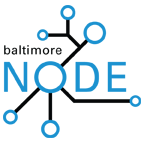501(c)(3) process
Appearance
Being a 501(c)(3) has the following benefits (copied from the interwebs)
- We won't pay federal corporate income tax except on income derived from unrelated business income. With this exemption, an organization can save 15% - 35% of its taxable income.
- In most instances, we won't pay state corporate income, franchise, excise, use, or sales tax.
- Can offer members, individuals, and corporate donors a tax deduction for their contributions.
- Eligible to receive private foundation grants. Private foundations are required by law to distribute a minimum amount of money for charitable purposes. One way they fulfill this obligation is by making grants to 501(c)(3) public charities.
- Eligible for lower postal rates on third class bulk mailings through the US Postal Service.
The process
- Decide who the board of directors is (these are the people who have responsibility for fiscal oversight of the corporation)
- Come up with an appropriate mission statement (you need this for the paperwork to come, plus it's obviously a good idea to get everyone on the same page about what you're trying to do)
- Decide who the officers are (President, VP, Treasurer, Secretary) -- make sure the Treasurer is someone who is good at bookkeeping, can run Quickbooks or the like without screwing things up
- File incorporation papers with the state of Maryland. The application fee is $170.
- Apply for an Employer Identification Number (EIN) so we can open a bank account
- File 501(c)3 application with the IRS (pretty time consuming but worth it). The application fee depends on the anticipated revenue. We are anticipating the fee to be $750.
- In a few months you'll get a letter back from the IRS authorizing you to be a nonprofit for five years
- At the end of five years you have to prove that you are really a charitable organization (they have a few tests they apply to your financial records)
